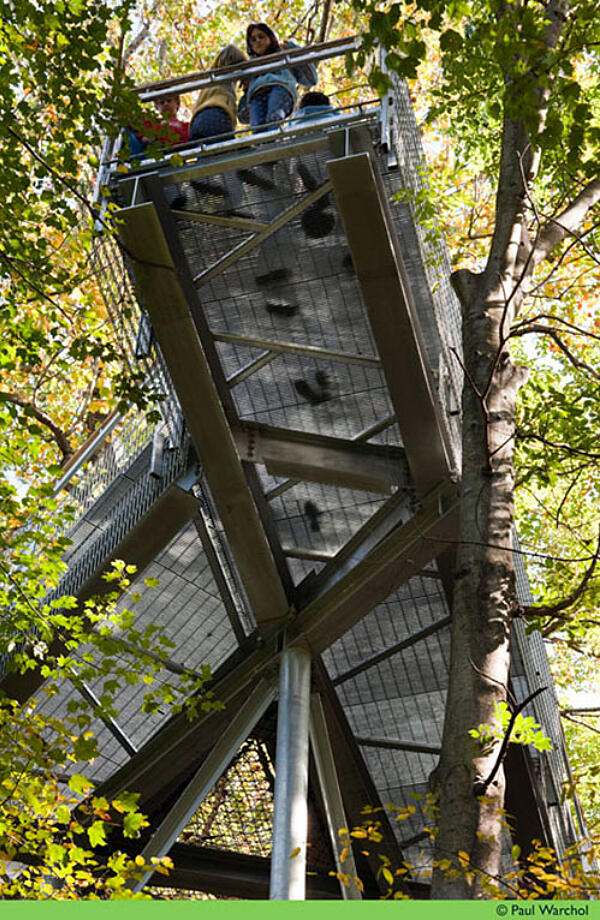HDG & LEED®
The US Green Building Council (USGBC) Leadership in Energy & Environmental Design (LEED®) rating system has been at the forefront of the green building movement since its inception. Based on feedback from the design community, USGBC has worked to evolve LEED® to be more objective, transparent, and all-encompassing. In the past, LEED® was criticized for being prescriptive, simplistic in its view of materials, and not a direct measure of a buildings greenness or sustainability.
Currently, there are two active versions of LEED® under which projects can be submitted and/or certified. On October 31, 2016, the USGBC will officially close registration of new projects to the LEED® 2009 system, meaning all new projects will have to register under LEED® v4. However, the certification sunset date for LEED® 2009 will not be until June 30, 2021. Therefore, both LEED® systems will be in essence active for the next five years.

LEED® v4 has been delayed a few times due to the comprehensive overhaul of the rating system. The new system is viewed as more in line with other green codes and standards such as ASHRAE 189.1 and the International Green Construction Code (IgCC) published by the International Code Council.
Hot-dip galvanized steels contribution to the LEED® systems would be within the Materials and Resources credit category under the Building Design and Construction (BD+C) system. Here is a summary of the LEED® MR credits that hot-dip galvanizing may be able to contribute towards.
LEED® v4
The Materials and Resources (MR) credit category within v4 evaluates products on their overall environmental impact and transparency. The three main areas where hot-dip galvanizing would contribute are Building Product Disclosure and Optimization (BPDO) credits.
BPDO Credit for Environmental Product Declarations (EPDs)
The first BDPO credit is for Environmental Product Declarations (EPDs). An EPD is a standardized way of quantifying the environmental impact of a product system. EPDs are based on life-cycle assessments (LCAs) and must follow specific Product Category Rules (PCRs) when being developed and are then verified by a third-party in accordance with ISO 14025, 14040, or 14044. After verification, the EPD can be published to one of several databases to be accessed by those seeking LEED® credits.
In order to achieve a point for EPDs under Option 1, the building must use at least 20 different permanently installed products sourced from at least five different manufacturers that provide one of the specified declarations. An industry-wide (generic) EPD is valued as one-half of a product, where as a product-specific EPD is valued as one-whole product.
To achieve an additional point for EPDs under Option 2 requires the use of third-party certified products that demonstrate impact reduction below industry average in at least three impact categories, as defined in the system. The threshold requires 50%, by cost, of the total value of permanently installed products meet the optimization standard, and also notes that products sourced within 100 miles of the site are valued at 200% of their base cost.
The key takeaway here is the lowest impact products do not have to be selected to earn the credit, but rather the products used have to have transparency. The implied and ultimate goal would be to choose products with lower impacts by comparing, but currently, the requirement is just to have the documentation. The AGA has produced an industry-wide EPD for hot-dip galvanized after fabrication hot-rolled structural sections, steel plate, and hollow structural sections (HSS).
BPDO Credit for Sourcing of Raw Materials
This credit is intended to reward project teams for selecting products that are extracted and sourced in a responsible manner. Similar to the EPD credit, it has two options for credit.

Option 1 uses the same threshold as the EPD credit in that it requires 20 products from five different manufacturers publicly report their raw material suppliers and extraction locations. Manufacturers who provide self-declared reports are valued as one-half of a product, where third-party verified corporate sustainability reports (CSR) are valued as one-whole product.
Option 2 is also similar to the EPD credit as it rewards optimization or leadership in extraction practices. The threshold is 25%, by cost, of the total value of permanently installed building products in the project, and includes a number of paths to demonstrate leadership such as extended producer responsibility, bio-based materials, wood products, materials reuse (similar to LEED® 2009s MR credit 3), recycled content (similar to LEED® 2009s MR credit 4), or USGBC approved program.
This BPDO credit does not offer an industry-average path, as it is specific to each manufacturer. In order to provide documentation for this credit, a galvanizer would need to source the information from the zinc provider and also possibly the acid and cleaning material suppliers. Talk to your individual galvanizer to see if their vendors have publicly available reports and/or meet one of the leadership practice paths, to learn about the potential for hot-dip galvanized steel to contribute to this credit.
BPDO Credit for Material Ingredients
The final BPDO credit is for Material Ingredients reporting or Health Product Declarations (HPDs). HPDs list out the chemical inventory of a product to at least 0.1% (1000ppm) with full disclosure of known hazards, and are published within one of several databases.
Once again, the threshold for achieving the Option 1 credit is 20 products from at least five different manufacturers. In order to satisfy this credit, the information must be published or certified under one of the various identified programs in the LEED® system.
There are two additional options for points within this BPDO, Option 2 which rewards products for material ingredient optimization, and Option 3 which awards products for supply chain optimization. Under Option 2, the threshold is 25%, by cost, of the total value of permanently installed products in the project that meet GreenScreen v1.2 Benchmarks, are Cradle to Cradle Certified, REACH optimization, or another USGBC approved program. Option 3 also used the 25%, by cost, threshold but looks at product manufacturers with validated or verified optimization practices related to health, safety, and transparency.
The AGA has published two HPDs for hot-dip galvanized steel with HPD Collaborative, one covers the use of high-grade and special high-grade zinc, while the other covers the use of prime western zinc. Although this credit does not identify an industry-average option, hot-dip galvanizing is more-or-less a commodity product and the materials ingredients disclosure is solely based on the type of zinc used in the facility. Therefore, a galvanizer can supply the HPD on either high-grade/special high-grade zinc or prime western zinc to satisfy this requirement for a project team. Furthermore, if high-grade or special high-grade zinc is used, the galvanized product should also meet Option 2 under the REACH optimization criteria.
LEED® 2009
The Materials and Resources (MR) credit categories within LEED® 2009 are much more focused on individual criterion such as recycled content, VOC levels, etc. These are the credit areas within LEED® 2009 where hot-dip galvanized steel may be able to contribute:
MR Credit 4: Recycled Content
Use materials with recycled content such that the sum of postconsumer recycled content plus ½ of the pre-consumer content constitutes at least 10% or 20% based on cost, of the total value of the materials in the project. The minimum percentage materials recycled for each point threshold is as follows:
- 10% 1 point
- 20% 2 points
The recycled content value of a material assembly is determined by weight. The recycled fraction of the assembly is then multiplied by the cost of assembly to determine the recycled content value.
There may be other areas hot-dip galvanized steel contributes points to your LEED® score on a case-by-case basis and thus each project should be evaluated individually. Here are a few additional areas utilizing hot-dip galvanized steel may contribute points:
MR Credit 5: Regional Materials
Use materials or products that have been extracted, harvested, or recovered and manufactured within 500 miles of the project site for a minimum of 10% or 20%, based on cost, of the total materials value. If only a fraction of a product or material is extracted, harvested, or recovered and manufactured locally*, then only that percentage (by weight) can contribute to the regional value. The minimum percentage regional materials for each point threshold is as follows:
- 10% 1 point
- 20% 2 points
*Per USGBC, the steel fabricator is the final point of assembly and is, therefore, the manufacturer in terms of LEED® Local/Regional Materials credits (unless steel is delivered directly from the mill to the site).
MR Credit 3: Materials Reuse
Use salvaged, refurbished or reused materials, the sum of which constitutes at least 5% or 10%, based on cost, of the total value of materials on the project. The minimum percentage materials reused for each point threshold is as follows:
- 5% 1 point
- 10% 2 points
ID Credit 1: Innovation in Design
Path 1: Innovation in Design (1-5 points)
Achieve significant, measurable environmental performance using a strategy not addressed in the LEED® 2009 for New Construction and Major Renovations Rating System.
- Material efficiency: utilizing hot-dip galvanized Architecturally Exposed Structural Steel (AESS) eliminates additional materials required for finishing as well as additional materials for future maintenance
Path 2: Exemplary Performance (1-3 points)
Achieve exemplary performance in an existing LEED® 2009 for New Construction and Major Renovations prerequisite or credit that allows exemplary performance as specified in the LEED® Reference Guide for Green Building Design & Construction, 2009 Edition. An exemplary performance point may be earned for achieving double the credit requirements and/or achieving the next incremental percentage threshold of an existing credit in LEED®
- 1 point for MR Credit 4: Recycled Content (exceeding by an additional 10%)
- 1 point for MR Credit 5: Regional Materials (exceeding by an additional 10%)
